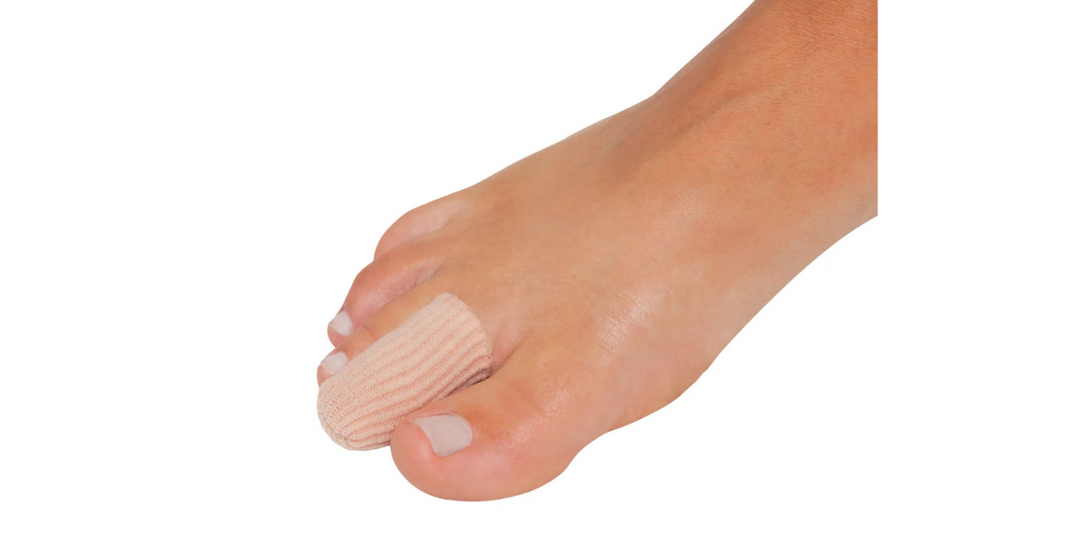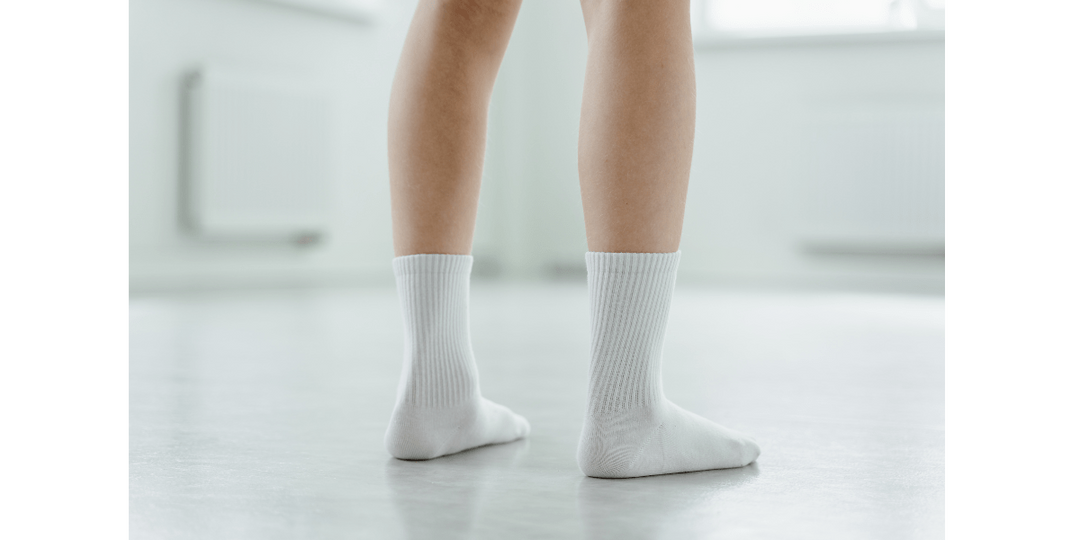What Causes Ridges & Splitting Of Nails?
Causes of Ridges and Split Nails: A Podiatrist's Perspective
Nail health is a strong indicator of overall foot health, and as a podiatrist, I frequently evaluate nail changes like ridges and splits. Both can occur in fingernails or toenails and may be linked to underlying health issues or environmental factors. Understanding the causes can help patients take steps to improve nail health and prevent further damage.

Causes of Ridges in Nails
Ridges in the nails can appear either vertically (running from the cuticle to the tip) or horizontally (running across the nail). The causes differ for each type:
Vertical Ridges: Vertical ridges, also known as longitudinal ridges, are usually a normal part of aging and often indicate natural changes in nail cell turnover. They can also be associated with dehydration of the nail plate, which can lead to a rougher texture as the nails grow.
Aging: As we age, nail growth slows down, and natural oils and moisture levels in the nail decrease. This makes nails more prone to ridging.
Nutritional Deficiencies: Deficiencies in vitamins like B12, magnesium, or biotin can contribute to vertical ridges. These nutrients are vital for nail strength and structure.
Dehydration: Frequent exposure to water, harsh soaps, or nail polish removers can strip moisture from the nails, worsening vertical ridges.
Horizontal Ridges (Beau’s Lines): Horizontal ridges, or Beau's lines, are often signs of temporary disruption in nail growth due to systemic factors. When the body undergoes stress or illness, it can impact nail growth, causing these lines to form.
Injury or Trauma: Trauma to the nail bed, such as stubbing a toe or wearing tight shoes, can interrupt nail growth and lead to horizontal ridges.Systemic Health Issues: Conditions like uncontrolled diabetes, severe infections, or high fever can temporarily disrupt nail cell production, resulting in Beau’s lines.Nutritional Deficiencies: Deficiencies in zinc, iron, or protein may contribute to nail abnormalities, including horizontal ridges.
Causes of Split Nails & Ridges
Split nails: (also called onychoschizia) occur when nails separate or peel in layers, typically at the tips. This condition often affects both fingernails and toenails and can be a result of environmental, physical, or health-related factors.
Physical Trauma: Regular trauma to the nails, such as stubbing the toes, wearing tight shoes, or participating in high-impact activities, can weaken the nail structure and lead to splitting. Constant pressure or friction on the nails disrupts their structural integrity over time.
Repeated Moisture and Drying Cycles: Repeatedly wetting and drying the nails, such as through frequent showering, swimming, or cleaning, can cause nails to expand and contract. This weakens the nail structure and causes it to split. Dry air or harsh nail treatments can further dehydrate the nail, worsening splits.
Nutritional Deficiencies: Nutritional deficiencies, particularly in biotin, iron, and essential fatty acids, can lead to weak, brittle nails prone to splitting. Maintaining a balanced diet rich in vitamins and minerals helps support nail strength.
Fungal Infections: Fungal infections in toenails, such as onychomycosis, can lead to thickened, brittle, and split nails. Fungal infections damage the nail structure from within, causing separation and splitting, as well as discoloration and texture changes.
Skin Conditions Skin conditions like psoriasis or eczema, which affect the nail bed or surrounding skin, can lead to nail splitting. Psoriasis, in particular, can cause pitting and thickening, leading to brittleness and peeling.
Hypothyroidism and Other Systemic ConditionsConditions like hypothyroidism can impact nail health by slowing down nail growth and reducing moisture levels in the nail, making it more susceptible to splitting and breakage.
Preventing and Managing Ridges and Split Nails
Hydrate and Protect Nails
Moisturizing nails regularly with a thick, fragrance-free moisturizer or cuticle oil can help prevent dryness and brittleness. Avoiding harsh chemicals, including acetone-based nail polish removers, also helps preserve nail moisture.
At The Foot Cae Shop we stock a great range of products to strengthen, protect and nourish your nails. For our entire range click HERE
Limit Trauma and Wear Protective Footwear
For toenails, wearing properly fitted, supportive footwear reduces trauma that can lead to nail ridging and splitting. Nail trauma from physical impact or pressure should be minimized as much as possible.
Avoid Overuse of Nail Polish and Removers
Using nail polish occasionally rather than constantly gives nails time to recover. Also, using acetone-free polish removers helps reduce dehydration, which can cause ridging and splitting.
At The Foot Care Shop we recommend the use of Dr's Remedy Nail Polish. Dr's Remedy is free from nasty chemicals and is breathable so it won't damage your nails like many other nail polishes on the market. Dr's Remedy nail polish remover is also acetone free. Shop Our Entire Dr's Remedy Collection by clicking on the link below
Address Fungal Infections
PromptlyIf a fungal infection is suspected, seeking early treatment can help prevent further nail damage and splitting. Fungal infections may require antifungal creams, oral medications, or laser treatment, depending on severity.
Consult a Podiatrist for Persistent ChangesPersistent or worsening ridges, splits, or discoloration in the nails may indicate an underlying health condition. A podiatrist can evaluate the condition, recommend treatments, and refer patients to other healthcare providers if a systemic condition is suspected.
Frequently Asked Questions (FAQs)
1. Are nail ridges a normal part of aging?
Yes, vertical nail ridges are generally a normal sign of aging and are not usually a cause for concern. Horizontal ridges, however, should be evaluated, as they can indicate an underlying health issue.
2. What can I do at home to treat split nails?
Regularly moisturising the nails, avoiding trauma, and wearing protective footwear can help prevent splits. Limiting exposure to water and avoiding harsh chemicals are also helpful steps.
3. When should I see a podiatrist for nail ridges or splits?
If you notice new or worsening ridges, splits that won’t heal, or if there is accompanying pain, discoloration, or thickening, it’s best to see a podiatrist. They can help diagnose and treat the underlying cause.
By addressing both lifestyle factors and underlying health conditions, patients can often see an improvement in nail health. Regular podiatric check-ups can provide valuable insights and treatment options tailored to each individual’s needs.
To find a Podiatrist follow our link to the Australian Podiatry Association Find A Podiatrist Page HERE









Leave a comment